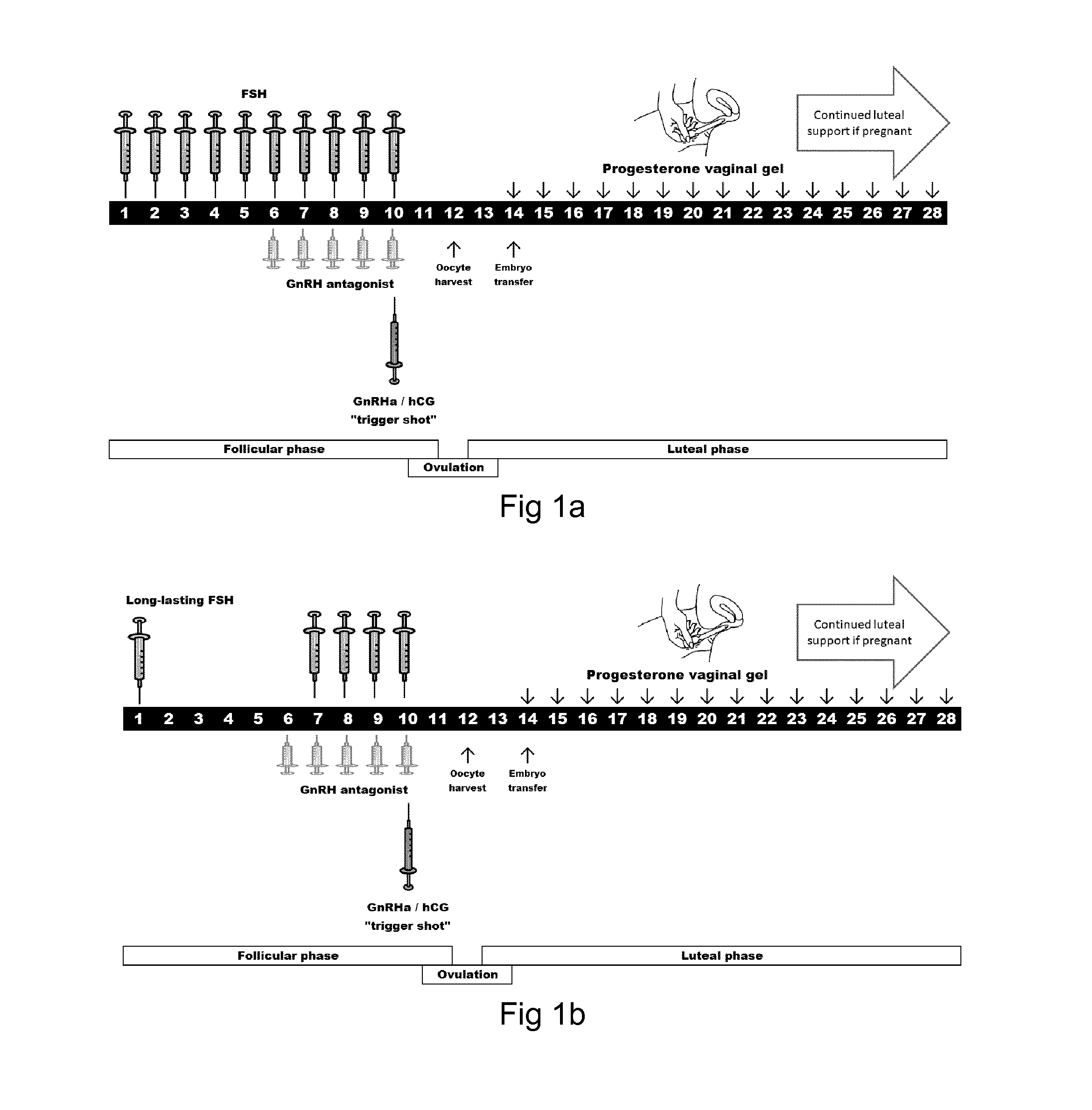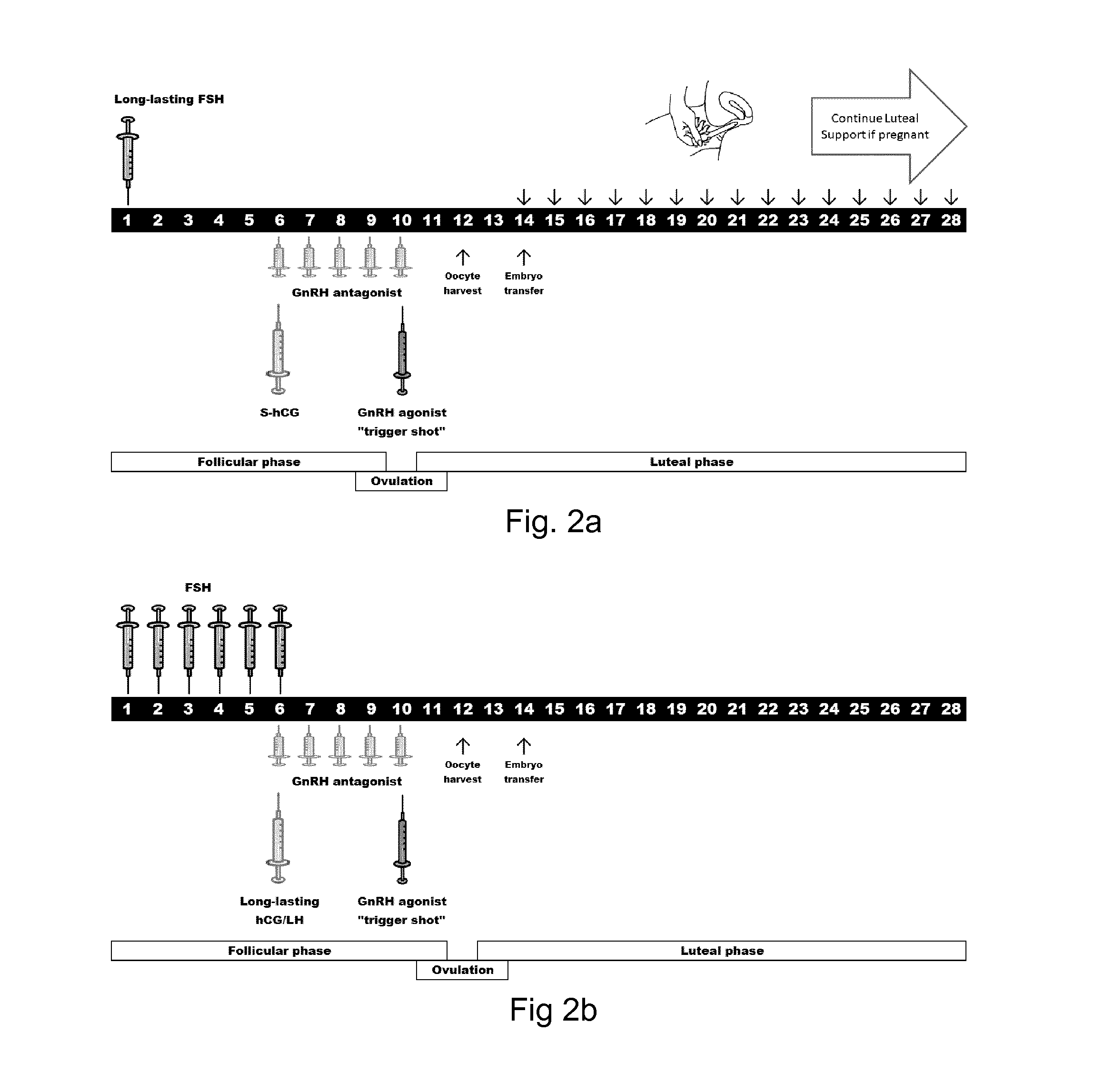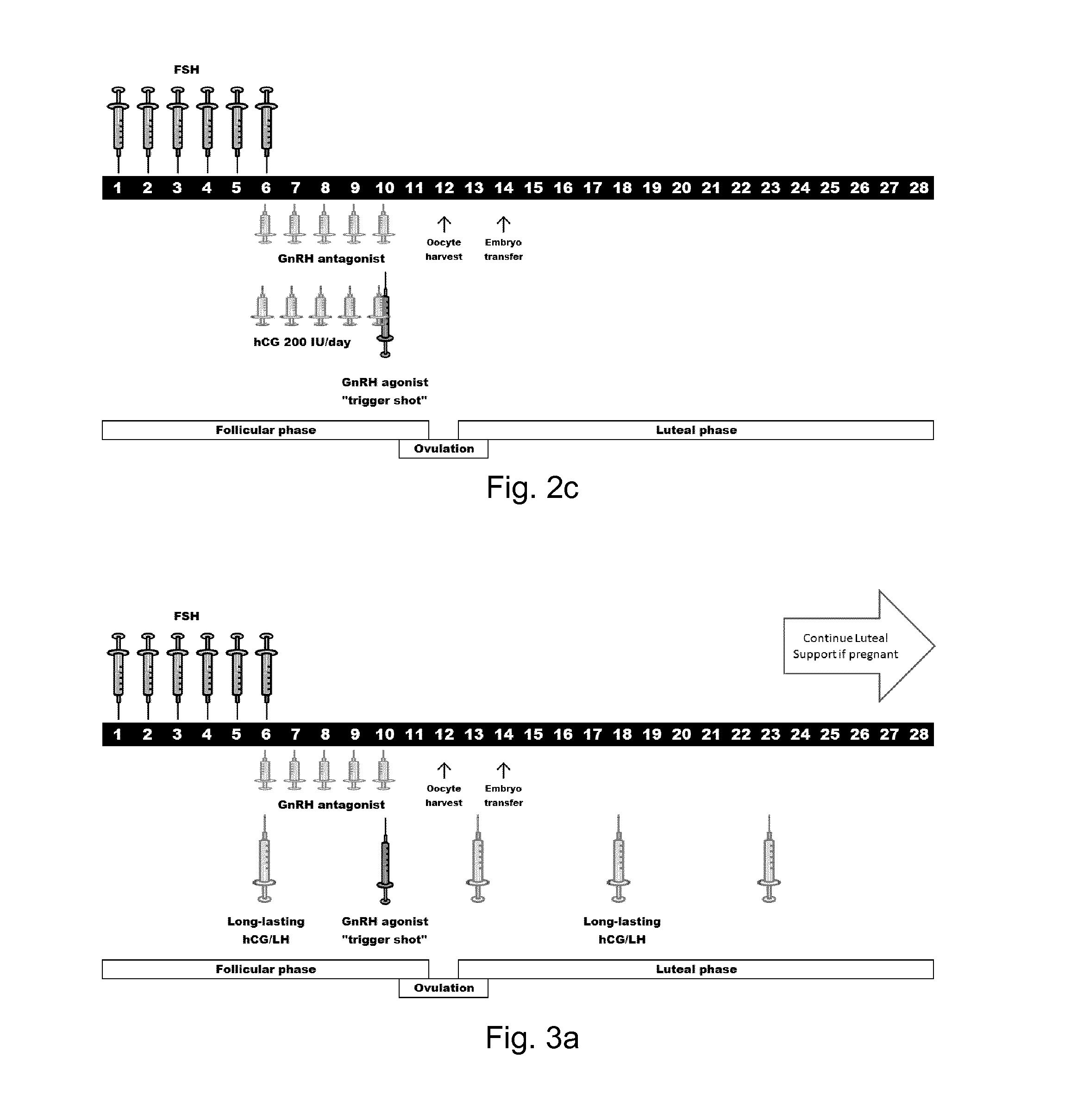Long acting biologically active luteinizing hormone (LH) compound
a biologically active, luteinizing hormone technology, applied in the preparation of peptides, animal/human proteins, pharmaceutical non-active ingredients, etc., can solve the problems of menstrual bleeding, new menstrual cycle, negative treatment effect, etc., to reduce androgen production in men, reduce male characteristics, and restore deficient hormones
- Summary
- Abstract
- Description
- Claims
- Application Information
AI Technical Summary
Benefits of technology
Problems solved by technology
Method used
Image
Examples
embodiment 1
2. The LH compound of embodiment 1 wherein the LH agonist is selected from a mammal CG or analog thereof or a mammal LH or analog thereof, such as recombinant hLH or hGH.
3. The LH compound of any one of the preceding embodiments wherein the LH agonist is chemically linked to the pharmaceutically acceptable molecule, optionally through a bifunctional linker.
4. The LH compound of any one of the preceding embodiments wherein the pharmaceutical acceptable molecule provides a biological body composition or concentration of the LH agonist or LH compound sufficient to drive an antral follicle from about 10 mm in diameter up to the preovulatory stage at about 15-30 mm in diameter in which a maturing oocyte can finalize the maturation to be ready for resumption of the meiosis.
5. The LH compound of any one of the preceding embodiments wherein the pharmaceutical acceptable molecule provides a biological body composition or concentration of the LH agonist or LH compound sufficient to support hy...
embodiment 15
16. The modified LH of embodiment 15 for providing an in vivo plasma concentration of the modified LH, the mammalian LH or a mixture thereof, in a mammal in the range of from 2 to 30 IU / L.
17. The modified LH of any one of the preceding embodiments 15-16 wherein the mammalian LH or analog thereof is a recombinant LH, e.g. rhLH.
18. The modified LH of any one of the preceding embodiments 15-17 wherein the modified LH comprises an analog of the mammalian LH, wherein the analog has at least 80% identity to the corresponding mammalian sequence of LH.
19. The modified LH of any one of the preceding embodiments 15-18 wherein the mammalian LH is selected from the sequence of human LH, and the sequence of horse LH.
20. The modified LH of any one of the preceding embodiments 15-19 wherein the pharmaceutically acceptable molecule is selected from any one of small organic molecules, peptides, oligopeptides, polypeptides, proteins, receptors, glycosylations, acylation groups, sugars, polymers (e.g....
embodiment 26
27. The modified LH of embodiment 26 wherein administration of FSH:LH the IU ratios range from 20:1 to 1:20.
28. The modified LH of any one of embodiments 25-27 wherein the FSH is selected from mammalian FSH, such as human FSH, in particular recombinant FSH, e.g. rhFSH.
PUM
| Property | Measurement | Unit |
|---|---|---|
| diameter | aaaaa | aaaaa |
| mean diameter | aaaaa | aaaaa |
| mean diameter | aaaaa | aaaaa |
Abstract
Description
Claims
Application Information
 Login to View More
Login to View More - R&D
- Intellectual Property
- Life Sciences
- Materials
- Tech Scout
- Unparalleled Data Quality
- Higher Quality Content
- 60% Fewer Hallucinations
Browse by: Latest US Patents, China's latest patents, Technical Efficacy Thesaurus, Application Domain, Technology Topic, Popular Technical Reports.
© 2025 PatSnap. All rights reserved.Legal|Privacy policy|Modern Slavery Act Transparency Statement|Sitemap|About US| Contact US: help@patsnap.com



